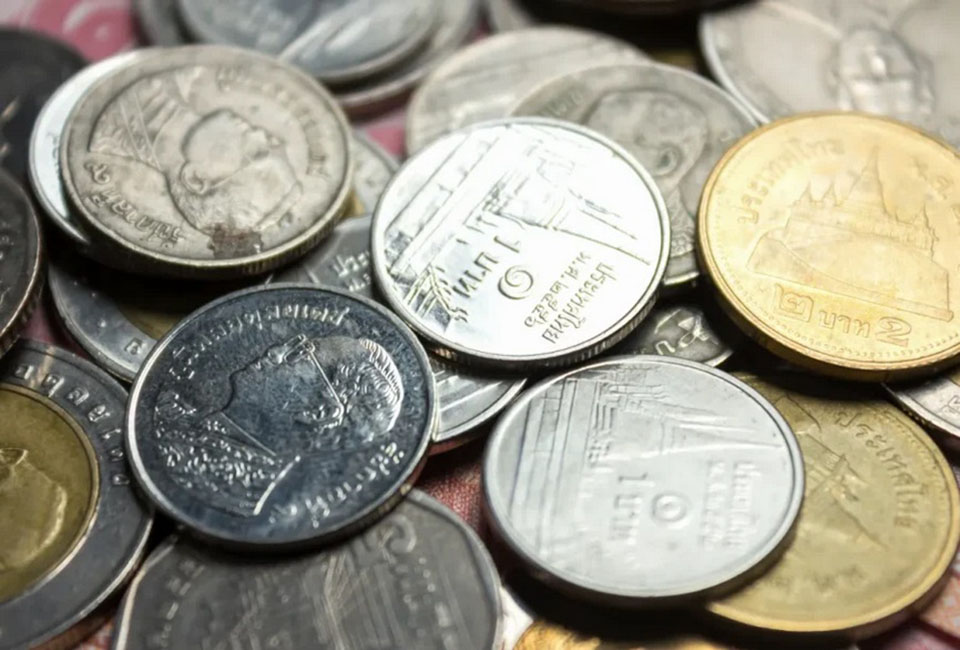
PATTAYA, Thailand – The Thai baht is expected to fluctuate between 33.70 and 34.50 baht per U.S. dollar this week, after opening at 34.01 baht per dollar on Monday morning. This marks a slight depreciation from last week’s closing rate of 33.99 baht per dollar. Over the next 24 hours, the currency is projected to trade within the range of 33.85 to 34.10 baht per dollar.
Since Friday night, the baht has moved sideways within a narrow range of 33.89 to 34.04 baht per dollar. Initially, the baht strengthened slightly as the U.S. dollar weakened, following market concerns over the economic impact of U.S. trade protectionism. This was reflected in the University of Michigan’s Consumer Sentiment Index, which dropped to 57 points, lower than market expectations. Additionally, short-term and long-term U.S. inflation expectations in the same report rose to 5.0% and 4.1%, respectively.
The baht also gained support from the continued rise in gold prices, which reached a new all-time high. Investors are worried about potential reciprocal tariffs and other trade barriers the U.S. government may soon impose. However, the baht weakened slightly on Monday morning amid renewed concerns over U.S. trade policies and the economic impact of Friday’s earthquake in Thailand.
Despite ongoing pressures from U.S. trade policies, the baht’s depreciation last week remained limited, thanks to support from rising gold prices. Looking ahead, key factors to watch include U.S. labor market data, U.S. and China’s manufacturing and services PMI reports, and any new trade measures announced by the U.S. government.
The baht remains at risk of further depreciation, particularly due to uncertainties surrounding U.S. trade policy and investor sentiment following the earthquake. However, if gold prices continue to rise or remain stable, the baht may find some support and move sideways.
As for the U.S. dollar, it could strengthen if the U.S. government proceeds with trade protectionist measures as previously announced by former President Donald Trump. However, the dollar may also face downward pressure if market concerns about the U.S. economic outlook persist, making the upcoming U.S. labor market report a key focus for investors.










